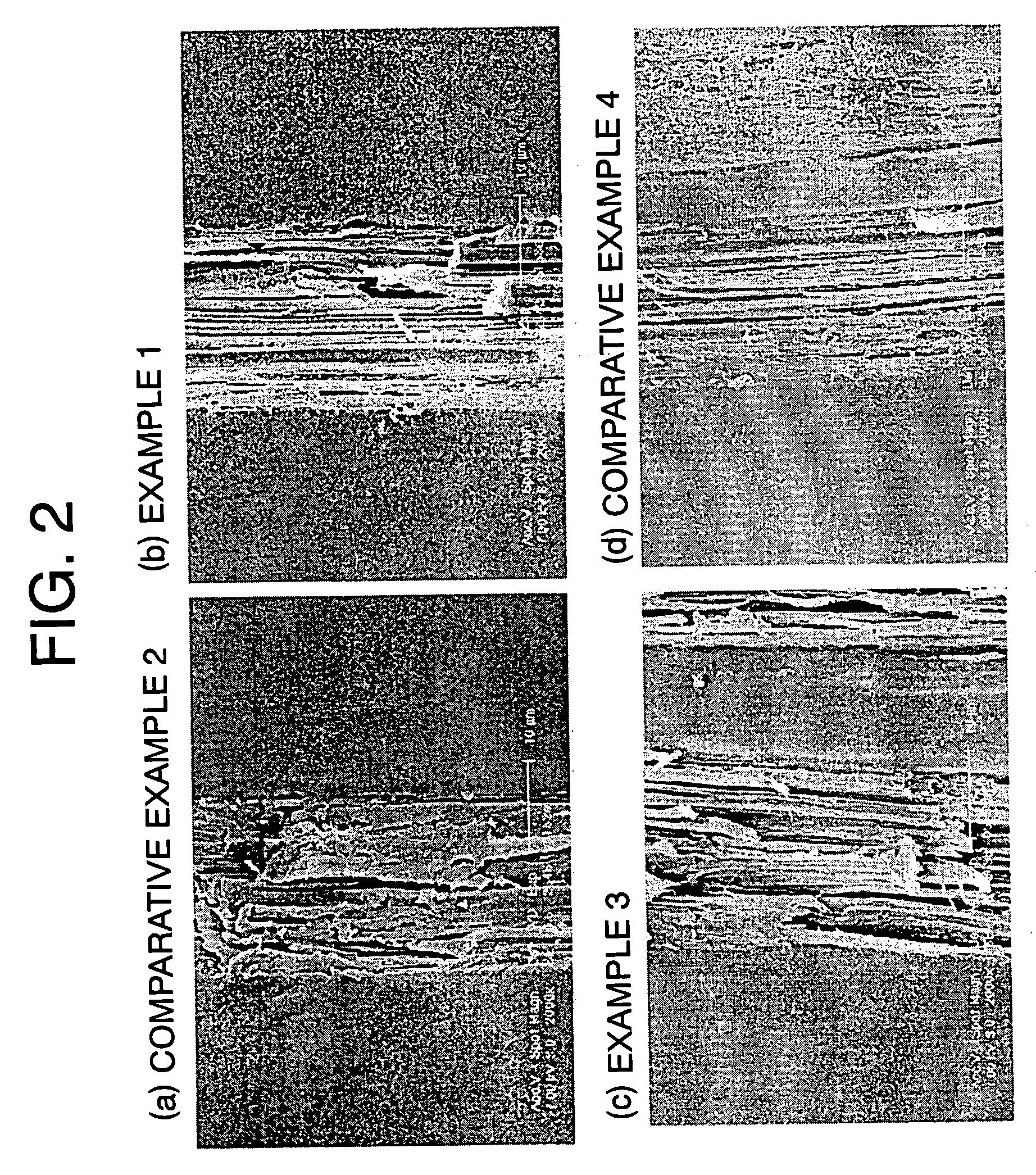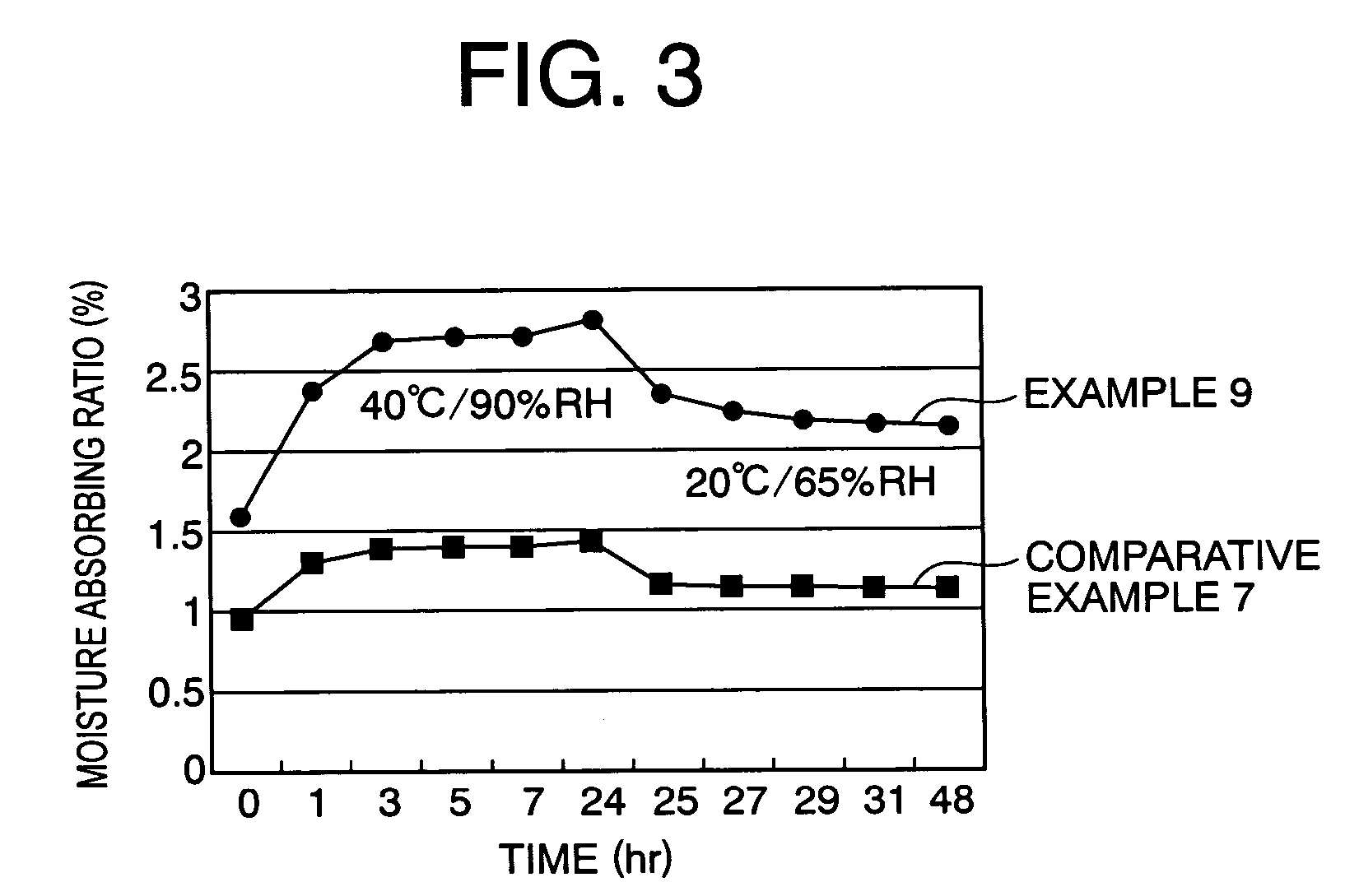Acrylic based composite fiber and method for production thereof, and fiber composite using the same
a technology of acrylic based composite fibers and fibers, which is applied in the direction of cellulosic plastic layered products, yarns, transportation and packaging, etc., can solve the problems of inability to develop staples, limited end use, and complicated production processes, and achieve the effect of reducing the mixing ratio of the fiber of invention in an end use product, excellent moisture absorption properties, and improving moisture absorption and retaining performan
- Summary
- Abstract
- Description
- Claims
- Application Information
AI Technical Summary
Benefits of technology
Problems solved by technology
Method used
Image
Examples
Embodiment Construction
[0043] Hereinafter, embodiments of the invention will be explained further specifically based on representative examples.
[0044] In the examples below, the phrase "% by weight" is indicated simply as "%".
[0045] (Ratio of the Longest Diameter and the Shortest Diameter in a Fiber Cross Section and a Number of Recess Parts in a Fiber Cross Section Outer Circumferential Part)
[0046] After wrapping a fiber bundle in a paraffin resin, and cutting to a 5 .mu.m thin layer with a microtome, a cut surface was observed with a transmission type optical microscope (produced by Nikon Corp., biological microscope E-800), so that a number of the recess parts of 0.3 .mu.m or more and 3 .mu.m or less width and 0.3 .mu.m or more and 3 .mu.m or less depth in a fiber cross section outer circumferential part was counted by visual observation.
[0047] (Observation Method for a Sea Island Structure)
[0048] After wrapping a fiber bundle in a two-liquid-type urethane resin, and cutting to 2 mm length with a safet...
PUM
| Property | Measurement | Unit |
|---|---|---|
| width | aaaaa | aaaaa |
| width | aaaaa | aaaaa |
| knot elongation | aaaaa | aaaaa |
Abstract
Description
Claims
Application Information
 Login to View More
Login to View More - R&D
- Intellectual Property
- Life Sciences
- Materials
- Tech Scout
- Unparalleled Data Quality
- Higher Quality Content
- 60% Fewer Hallucinations
Browse by: Latest US Patents, China's latest patents, Technical Efficacy Thesaurus, Application Domain, Technology Topic, Popular Technical Reports.
© 2025 PatSnap. All rights reserved.Legal|Privacy policy|Modern Slavery Act Transparency Statement|Sitemap|About US| Contact US: help@patsnap.com



